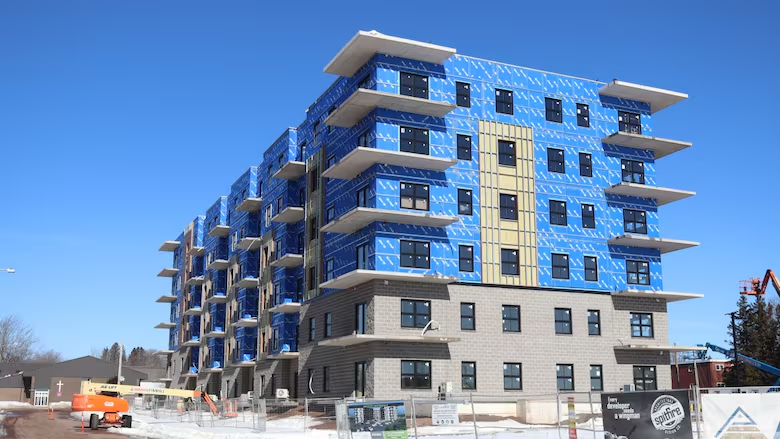Moncton eyes more compact development to help house a booming population
Council voted to adopt urban growth strategy that targets 11 sites for growth

Moncton councillors have voted unanimously in favour of a plan calling for higher-density housing developments over the next 25 years to accommodate a booming population.
The urban growth strategy calls for a "compact" strategy focused on 11 sites in the city. The plan, prepared for the city by Watson & Associates Economists Ltd., was presented at a committee meeting Monday afternoon.
"This report is a foundational document, it's a road map of how the city will grow and where," said Erik Karvinen, a manager with the firm.
Karvinen said the document will help guide the pending review of the municipal plan, a document that sets out land-use rules and goals, and could also help guide future transit, park and school planning.
The city and the firm began developing the strategy in 2021 and held several rounds of public consultation. The report uses population projections to determine the number of new homes that will be needed in the next 25 years.
Almost 35K more people expected by 2046
The consultants settled on a high-growth population projection forecasting a 42 per cent increase, or 34,700 people, by 2046. The recent increase has largely been driven by international migration.
"There's definitely significant growth that Moncton will need to plan for over the next 25 years," Karvinen said.
As a result, the strategy says the city will need to increase its housing supply by 45.6 per cent, or 16,000 housing units, over current levels. Roughly half are expected to be high density, like apartment buildings, rather than lower-density single-family homes, semi-detached or townhomes.
Based on that, the consultants looked at whether there's sufficient land within municipal limits.
Bill Budd, the city's director of planning and development, told council they concluded there's room for more than 32,820 units.
The strategy then looks at 11 potential sites. Some are considered in-fill areas within existing neighbourhoods, while others are "greenfield" sites that have not been previously developed, like the Vision Lands.

A detailed analysis estimated upgrading or installing the roads and utilities to service those areas could cost more than $166 million. Council was told the strategy will help plan future spending needed to open up those areas.
Without some of that spending, Budd said the city may need to start refusing proposed developments in areas like the eastern portion of the Vision Lands where new or extended roads are required. He said there are several planned apartment buildings in the city's east end near Humphrey's Brook awaiting new infrastructure.
The strategy includes various methods to cover the infrastructure costs such as charges to developers.
Budd said the strategy also calls for increased density along several major corridors served by public transit or near post-secondary institutions like Mountain Road.
The strategy says the city will likely need to expand its "urban boundary," an area within municipal limits that can be serviced by water and sewer lines. The boundary is meant to act as a check on sprawl, keeping some areas at the city limits more rural.
Budd said the goal of compact growth is to keep those areas rural.
"The goal in the rural area is just to preserve its rural character probably for the next 25 to 30 years," Budd said.
"It's a land bank. If we ever need it, if we fully build out, we can evaluate it. But we don't really need to go there."
The strategy suggests the compact growth scenario would reduce greenhouse gas emissions by about 96,400 tonnes over a business-as-usual approach.
The consultants said more than 88 per cent of respondents to a consultation survey supported the compact approach.
The strategy recommends the city consider a number of tools to pay for the infrastructure and facilitate its goals.
Those include inclusionary zoning rules that would require certain housing developments to include affordable housing, or provide cash-in-lieu. The city previously considered the option but didn't implement it.
Multiple councillors expressed support for the the strategy Monday.

Coun. Daniel Bourgeois said the strategy allows the city to plan for its growth. However, he said it won't always be easy.
"There will be messes," Bourgeois said. "There will be conflicts in use and everything else. We are at a crossroads but I am hopeful that people will understand. But we have to explain it.
"We have to say, 'Alright folks, if you think the change of the last five years was something, the next 20 years are going to be something else.'"
The strategy lays the groundwork for the launch of the review of the municipal plan, which was last updated a decade ago.
Budd said that review is expected to start this year and last 18 months. It will include several rounds of public consultation.

